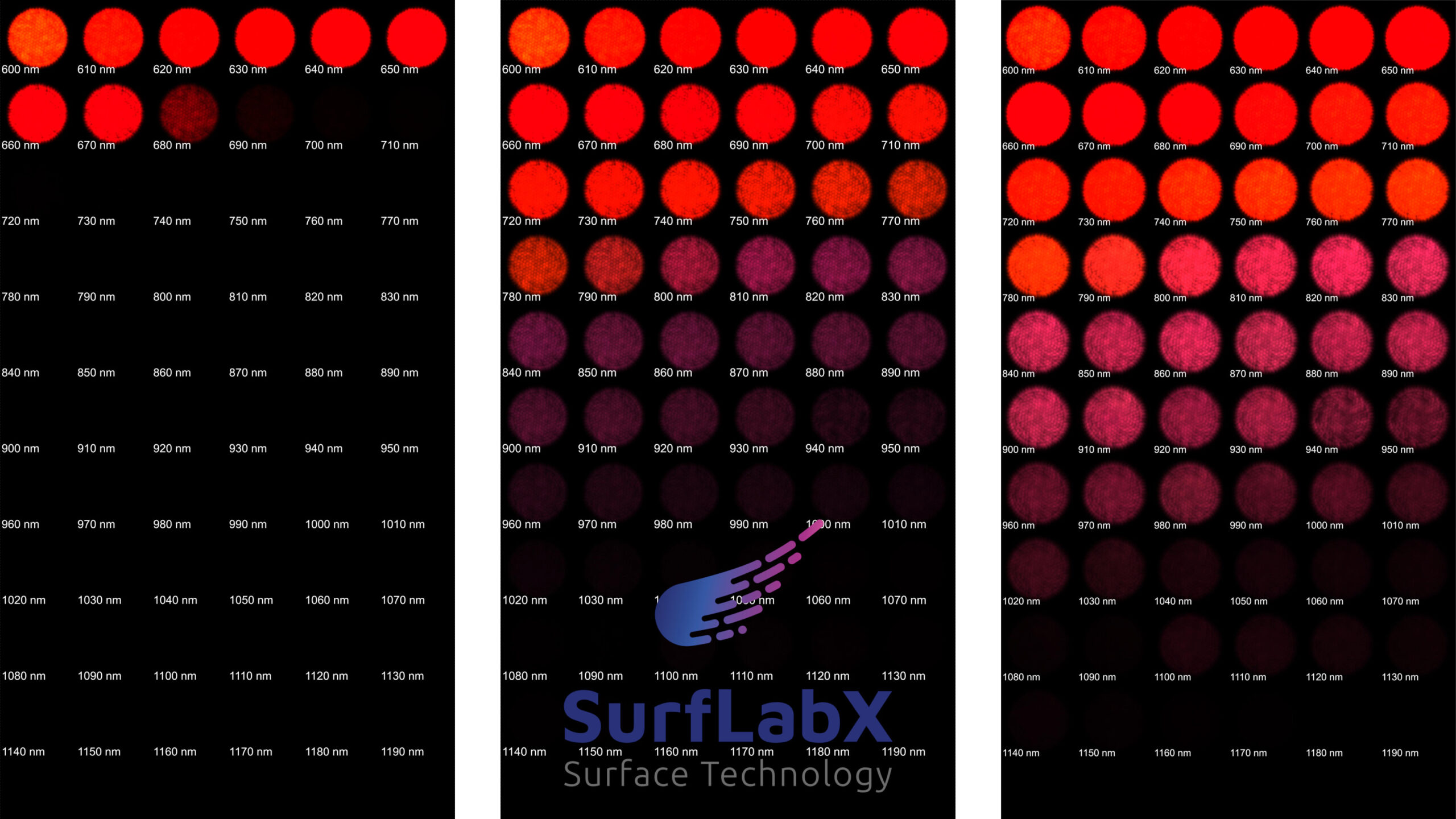Which camera is actually the best for infrared? Is model X more suitable for IR than model Y? Through many years of experience, the answer has always been: "It doesn't really make much difference". This gut feeling is more than sufficient for creative IR photography and that could be the end of the article. But for certain applications, especially for Electroluminescence measurements of photovoltaic modules, the actual sensitivity at the limit of the camera sensors may be quite important. This long-held assumption can now be supported by a few solid measurements of various CMOS sensors. The company SurfLabX from Taufkirchen (Germany) has measured various Fullspectrum modified cameras from IRreCams in their laboratory and we can take a closer look at the results.
A short Summary
A brief summary for those of us in a hurry: All Fullspectrum cameras tested were able to detect Infrared light in the range of 1,000 nm to 1,200 nm. It made no significant difference whether a Fullframe, APS-C or MicroFourThirds sensor was installed, nor did the manufacturer of the sensors (Canon, Panasonic, Sony) appear to have any significant influence on the result. Likewise, a modern Backside Iluminated sensor (BSI) shows no fundamental advantage over regular Frontside Iluminated sensors.
Above 1,200 nm, virtually no sensitivity could be measured with the cameras; this is probably the technical limit of the semiconductor material (silicon). The bottom line is that similarly good results can be achieved in the near Infrared with all cameras and sensors from the last few years.
The crucial factors for image quality are rather the noise performance and the dynamic range of the camera (these key figures are available in the visible range through various tests). Things like ergonomics, autofocus speed and available lenses should be much more the deciding criteria when it comes to the question of which camera is the best for Infrared. Because this question is, as in the visible spectrum, highly subjective.
Experimental setup and qualitative evaluation
And now for the long version, let's first take a look at how the cameras were tested. A monochromator was used to send a monochromatic light beam directly onto the sensor of the cameras. No lens was mounted on the cameras, so the radiation could hit the camera sensor without obstruction. The images were then captured at ISO 200 with an exposure time of 1/30 s each in RAW format for further processing. Here is a collage of the individual images without additional processing.
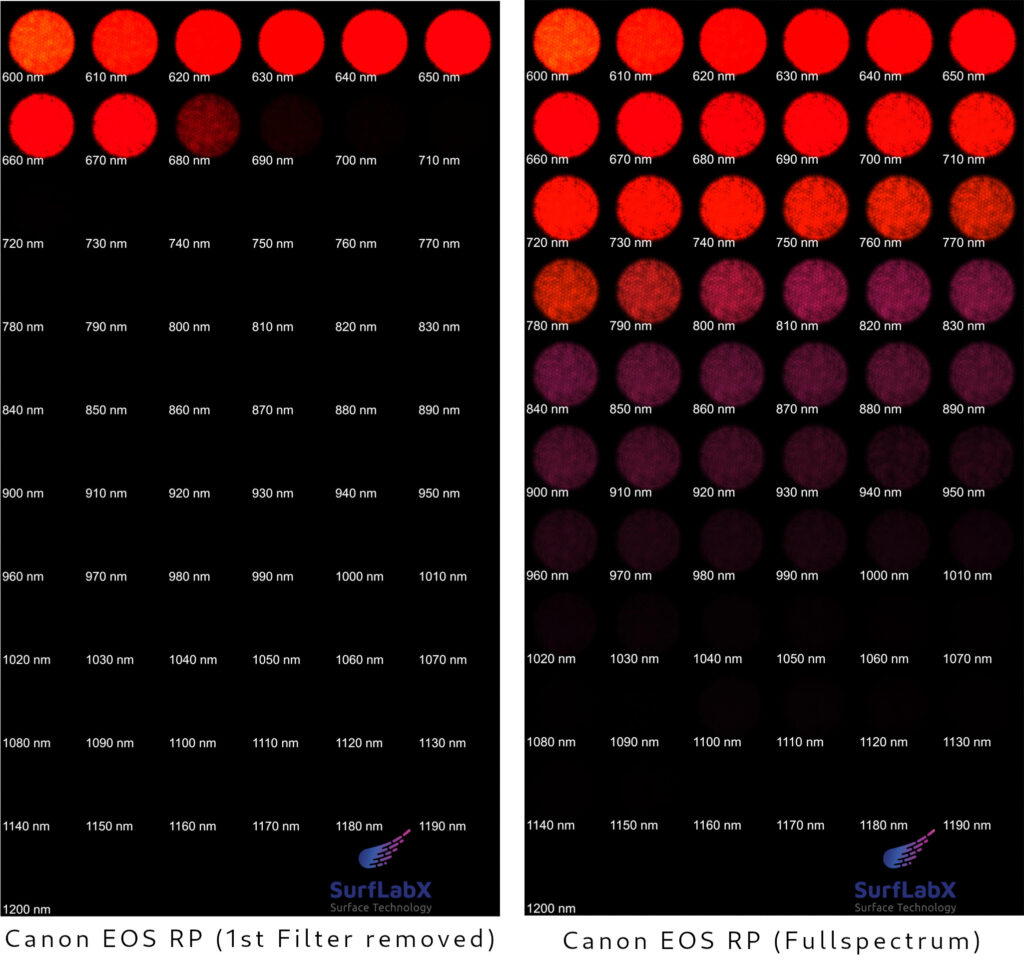
On the left is a Canon EOS RP with only the first blocking filter removed (the camera corresponds roughly to an Astro conversion), on the right is a Fullspectrum Canon EOS RP. With the naked eye you can already see that the Infrared radiation above 700 nm can only generate a signal on the sensor after a Fullspectrum conversion. However, very little can be seen in the darker fields without processing. In order to improve the visibility for the eye, the brightness of all individual images was adjusted to a uniform level.
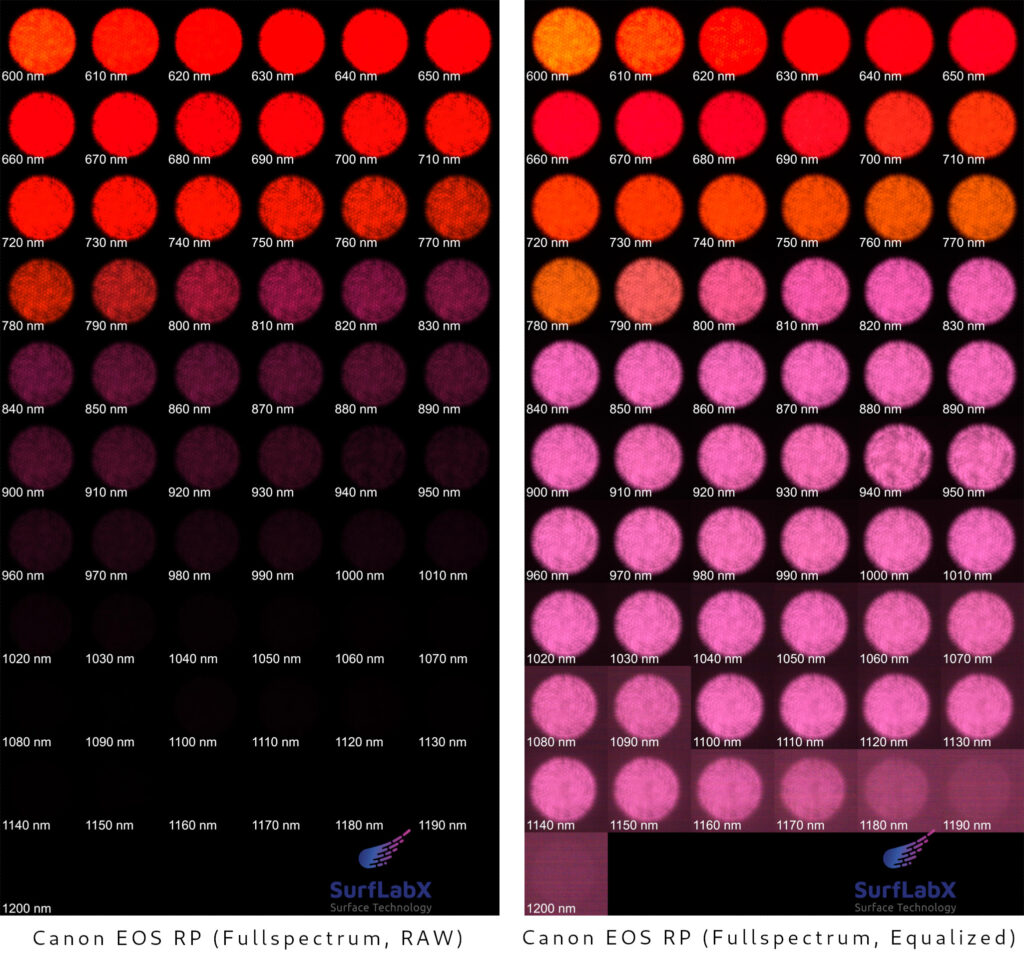
This image shows the unprocessed version of the Fullspectrum RP on the left and the brightened images of the same file on the right. As was to be expected, there is significantly more information in the dark areas of the RAW files than the unprocessed images would suggest. At the same time, however, the noise is also brightened and increased with the processing. In the last 3 images, you can see how the actual signal is increasingly lost in the noise and threatens to disappear.
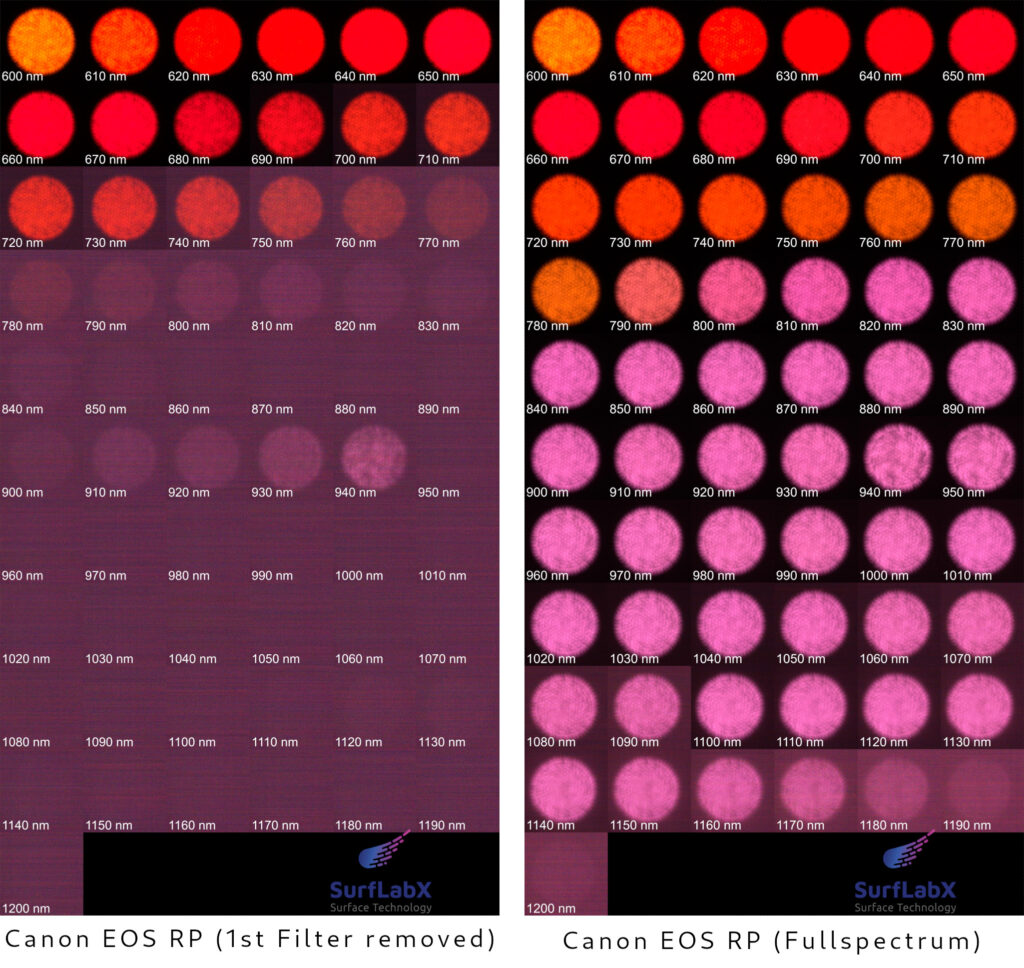
If we now compare the Canon EOS RP without the first blocking filter with the full spectrum RP, it is very clear that without a full spectrum modification, practically only noise comes through. For infrared light, such a camera, or an unmodified camera, is absolutely useless. Smaller signals can still be detected from time to time (e.g. at 910 - 940 nm); these are most likely due to the fact that the still installed blocking filter has small "leaks" in the IR (small fluctuations in the transmission curve are quite normal with interference filters).
Before we look at all the results, here is a comparison of an APS-C camera with a Fullframe camera:
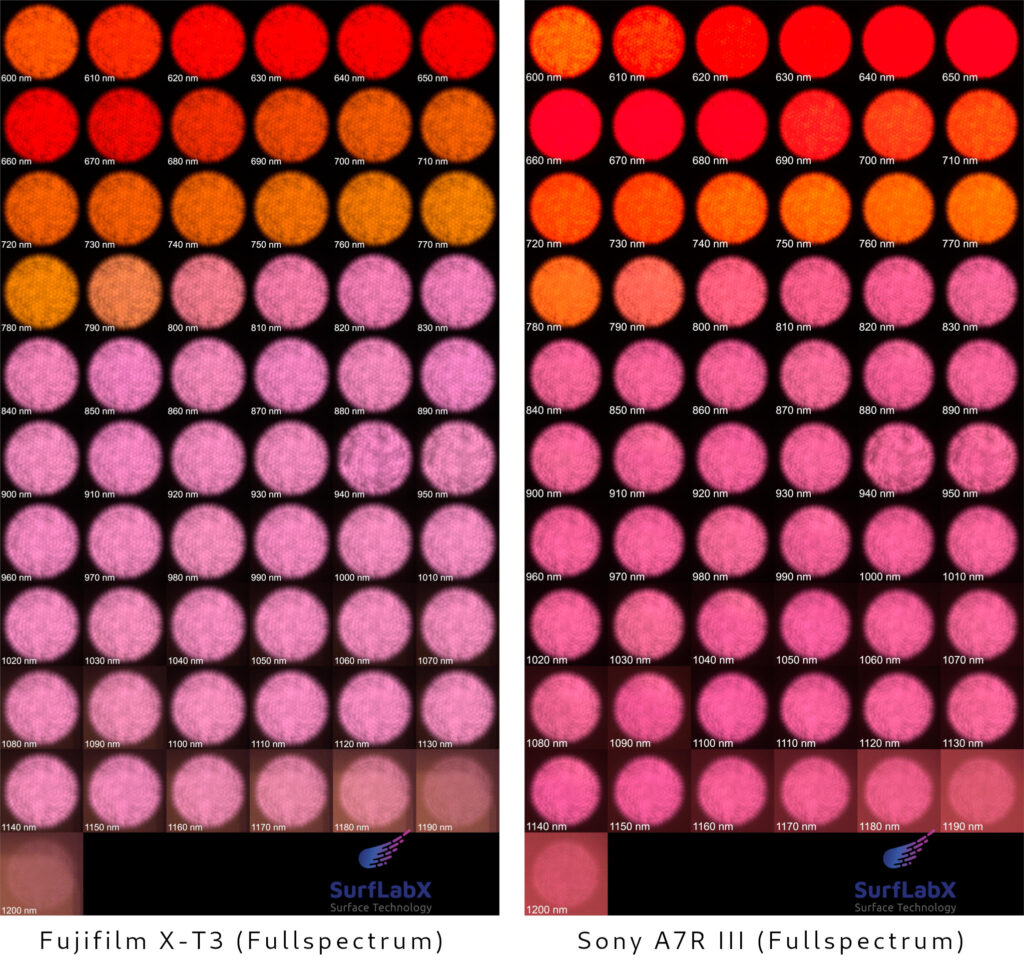
Both cameras have been converted to full spectrum and both cameras have "modern" BSI sensors. From a purely qualitative point of view, however, there is not much difference between the Fujifilm X-T3 and the Sony A7R III. Current sensor generations, regardless of their size, have reached a performance plateau over the last few years where they are virtually on a par.
Results in detail
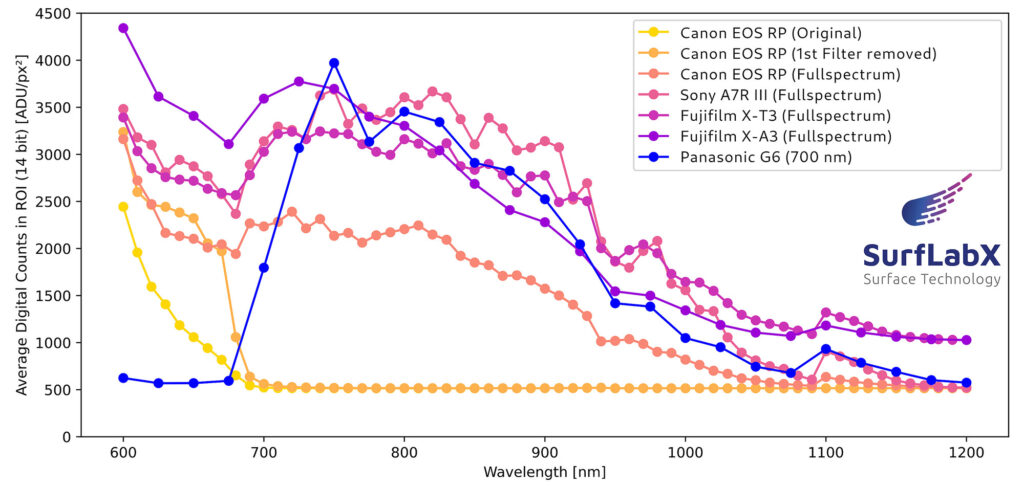
The graph above summarizes all test results and shows the signal strength as a function of the measured wavelength. The higher the value at a wavelength, the more sensitive the sensor is. The unmodified Canon EOS RP and the RP without the first blocking filter clearly show no sensitivity for Infrared radiation above 700 nm, they are at the very bottom of the diagram. Only with an Infrared conversion the radiation can reach the sensor without restriction and be detected there. All Fullspectrum cameras show more or less the same characteristics and are very close to each other. The Panasonic G6 tested had a 700 nm long-pass filter installed; here the curve matches the other Fullspectrum cameras from approx. 750 nm.
I would like to address one apparent outlier right away: The Fullspectrum Canon EOS RP seems to deliver visibly worse results than all other cameras tested. After some research, it turned out that the test parameters for this camera were chosen in an unfavorable way. For some reason, the readout noise of the RP in the low ISO ranges (the measurements were taken at ISO 200) is significantly higher than with other cameras (by a factor of 3). From an ISO range of 3,200, however, the noise of the RP approaches that of the other cameras and is then at eye level. If the measurements had all been taken at a higher ISO, the RP would almost certainly not be out of line with the other results.
Now that we are talking about noise, we also need to look at the noise characteristics of the individual sensors in order to better understand the curves in the diagram above. If a camera was extremely noisy, in the end we would only have measured the noise and not the true signal that the sensor delivers to us. The noise characteristics of the cameras must therefore also be taken into account when making an assessment.
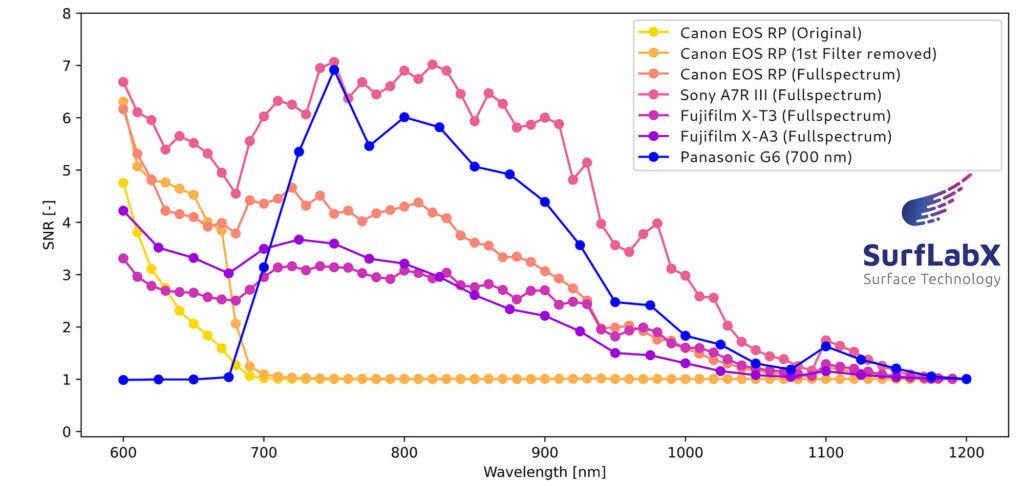
This graph shows the smoke behavior (SNR) as a function of the measured wavelength. A higher value means that the camera delivers a "cleaner" signal and there is less noise in the image. Again, all cameras are more or less close to each other and show a similar picture. From a wavelength of 800 nm, the results become increasingly worse and approach a limit around 1,200 nm - only noise can be observed here.
A comparison between the Fujifilm X-A3 (frontside illuminated sensor) and the X-T3 (backside illuminated sensor) shows no significant difference in signal behavior or noise characteristics. This type of sensor production therefore does not appear to have any significant influence on IR sensitivity.
If you look at both diagrams, you can see that at least in the range that is interesting for the electroluminescence of PV modules (950-1,150 nm), all cameras are very close to each other. It is difficult to recognize a difference and to make a recommendation in one direction or the other.
But let's try to pick a winner. If we look at both diagrams, the Sony A7R III comes out on top in terms of both signal behavior and noise. If we want to choose a "worst" camera, it would probably have to be the Canon EOS RP based on the available data. I would like to emphasize once again that this is only due to the combination of the measurement parameters in combination with the camera's internal signal processing - at higher ISO values, the RP would almost certainly be on a par with the other cameras (high ISO values are used for the electroluminescence measurement of photovoltaic modules in particular).
But what does this mean in practice if we look at the "winner" and "loser" side by side?
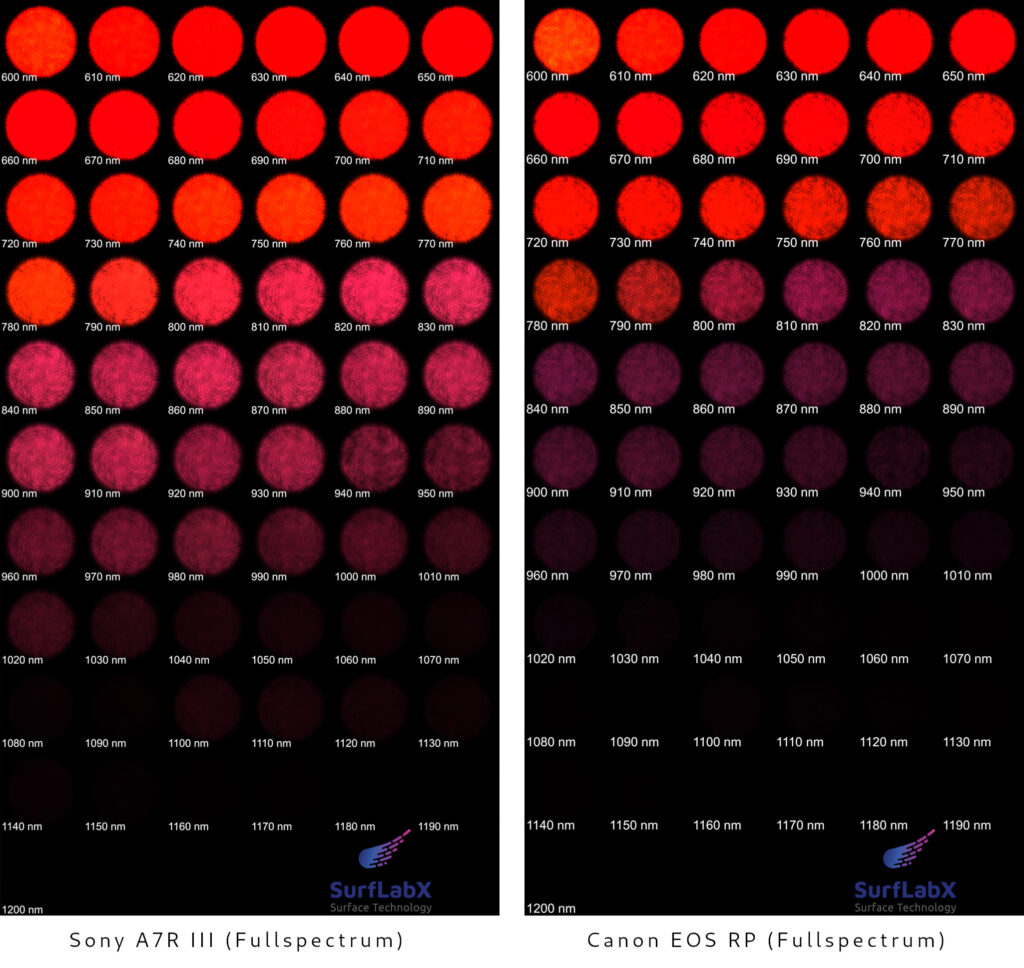
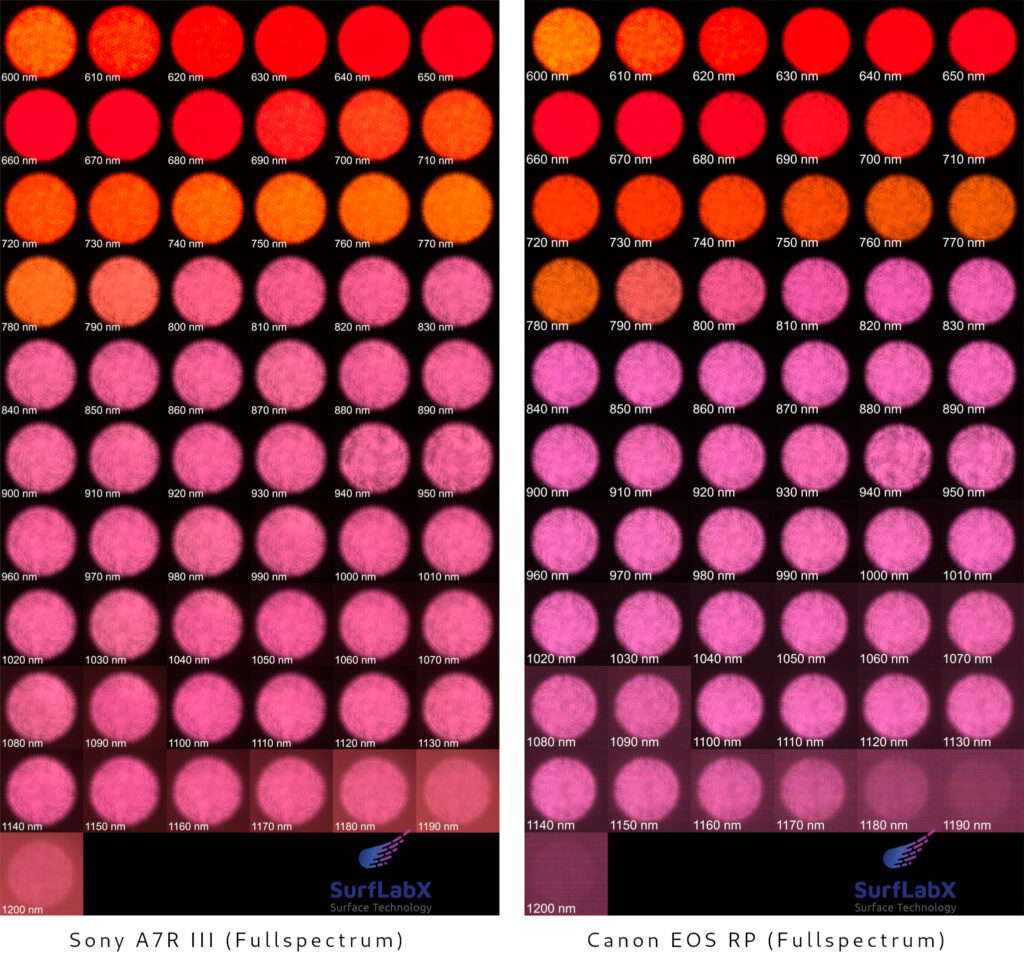
Although differences in the higher wavelengths are recognizable in both the unprocessed version and the brightened version of the test series, both cameras basically produce results that do not differ that much in practice. At the higher wavelengths, both cameras produce noise, but the light beam still remains visible.
The results of the other cameras are all somewhere in between, tending to be closer to the results of the Sony. No stacked sensors are included in this test series, and a comparison of a monochrome sensor would also be interesting. Perhaps there will be an opportunity to measure this again in the future. Until then, I would like to come back full circle to my original gut feeling: "It doesn't really make much difference".
Once again, I would like to thank the company SurfLabX, especially Mr. Karpen, for providing the measurement results and for the interesting exchange about camera technology.

